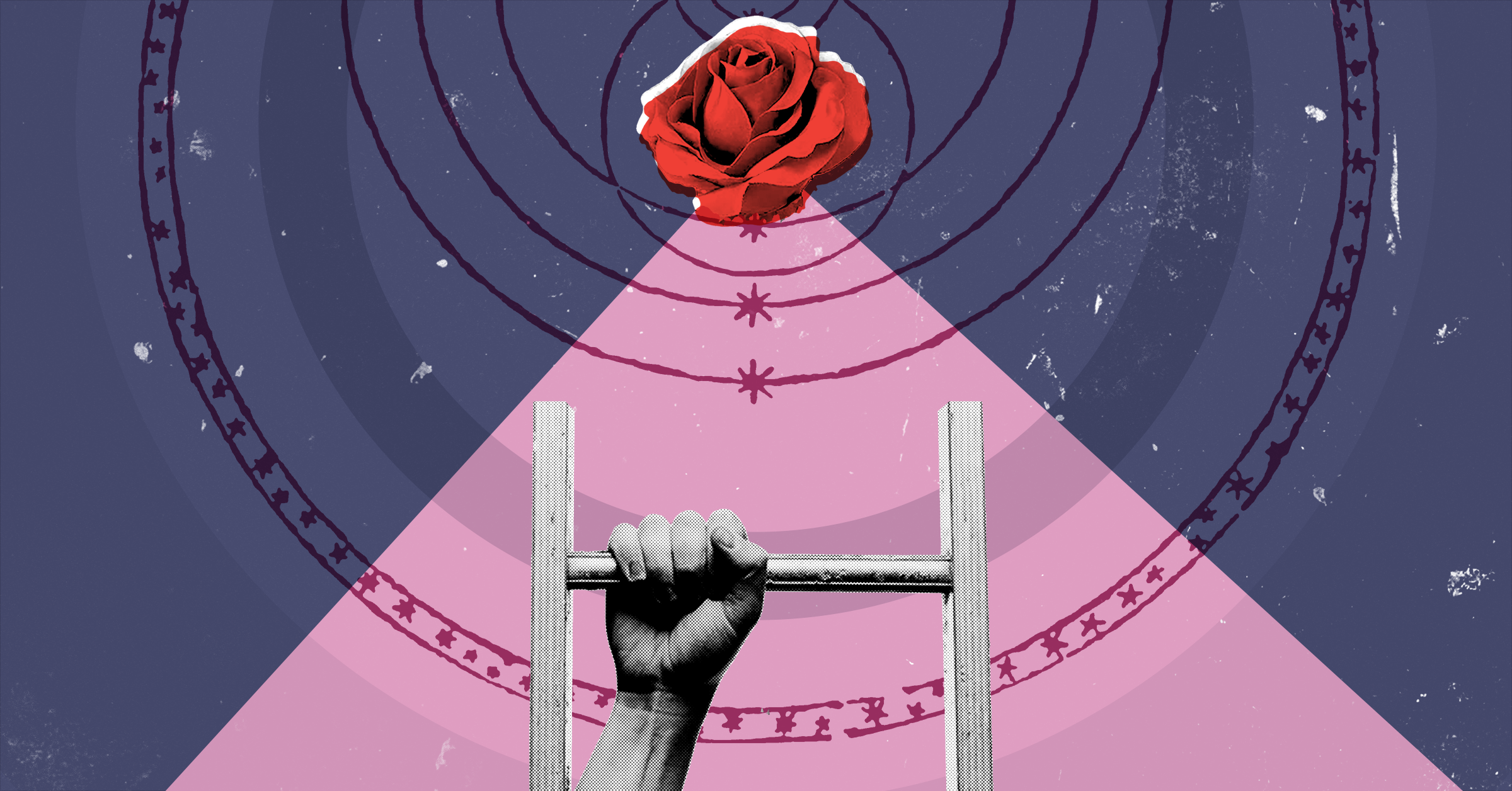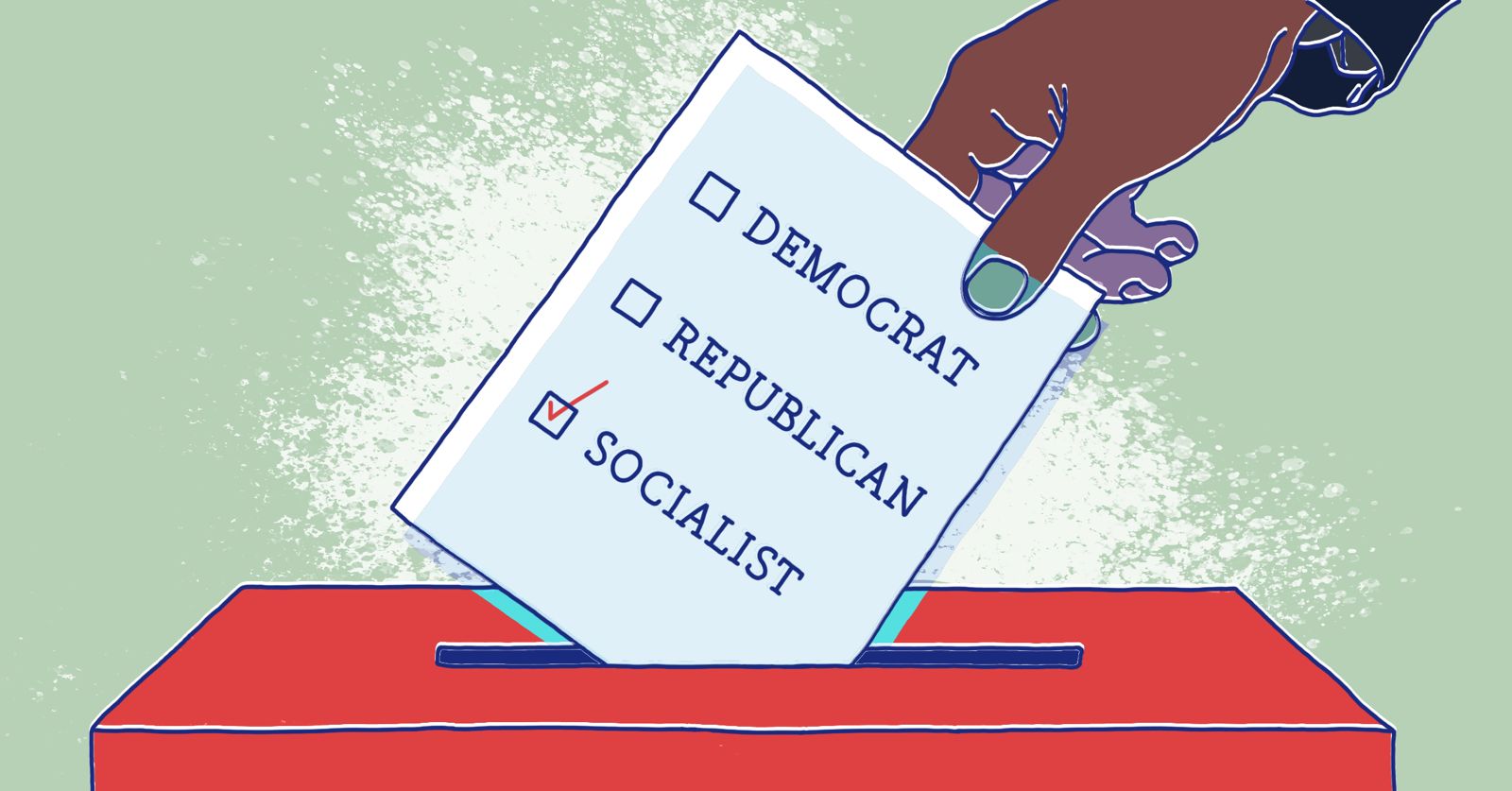In the summer of 2020 much of Louisville found itself rallying in defense of Black lives after the police killing of Breonna Taylor. Daily protests went on for months. Louisville DSA participated minimally in these actions as a chapter, although many members, including ourselves, participated as individuals to a much greater degree. If DSA is to marry the work of socialists with working-class self-activity, chapters must take part in social movements that highlight the effects of oppression, such as the movement for Black lives.
However, despite the good intentions of Louisville DSA members and the countless others involved in the protests, they were not effective in establishing any policy or infrastructure which will meet the needs of the multiracial working class that are being neglected by the city. Why was this the case? How can we assess our work as socialists to ensure that that work 1) is responsive to the stated needs and demands of the entire working class of our city and 2) results in sustainable organization that brings socialists together with the rest of the multiracial working class?
In Louisville and elsewhere, protesters broadly agreed that citizens should not be murdered in their own homes by the state. Proposed “solutions” have been all over the map, despite a growing consensus on the Left around demands to defund or abolish the police. Where we’ve failed is in establishing ongoing political organization in the working class that could push for that goal. Our organization, DSA, is no exception. We have not popularized a politics or a set of demands that could replace the failed model of policing, nor have we built the sort of organizations in the working class that could build power to fight for those politics.
A common tension in DSA chapters is around what types of strategies and tactics should be applied in a given campaign. Street protests and rallies are a frequent point of contention. Among those who see themselves as on the left side of our big tent, impatience around tactics sometimes emerges. For many socialists, especially newly minted ones, a common sentiment is, “People get turned off by all the meetings with their discussions about rules and want to see action.” They feel that we should prioritize tactics that feel or seem to them to be more energetic and effective. For some this manifests as a romanticization of street protest and other confrontational tactics while for others it means “mutual aid” aimed at the temporary amelioration of an acute crisis faced by individuals. At times the wariness of some Marxists toward these tactics can become its own dogma.
This is a mistake that many organizers make: choosing a tactic before an end goal has been visualized. As Marxists who respond to the particular historical circumstances in which we find ourselves, questions around strategy are evergreen; we can never afford to be dogmatic. However, it is also not sufficient to simply define the objective before designing a campaign. The following order of operations for socialist activity is effective. First, identify the problem. Then assess a particular organizing opportunity using the rubric “can it materially and concretely increase working class power?” Then choose strategies and tactics for that campaign.
Further, you’ll need a timeline. For example, in the Louisville DSA chapter, we proposed a People’s Budget Amendment to the city budget, which would defund the police by 15% with a concomitant increase in public services. The window for getting the amendment passed only existed for a couple of months. Other objectives take years to carry out, such as achieving Medicare for All.
We have a rubric for evaluating a demand, a campaign, or a socialist objective: Does it get to the root of an issue and lay groundwork for further reform and working-class power? Does it have or can it have sufficient popular support? Is it winnable? Does it strike at a crisis of capital or ruling class power and make space for the working class to establish power? The chart is a tool for making these kinds of assessments. The fight against police brutality is a perfect opportunity to gain some lessons about choosing tactics and campaigns and evaluating what fits best with our end goals. We’ll use examples from Louisville.
Tier 1: Amelioration
Socialists should always be aiming for every tier; liberals and others on the left tend to look purely to fixing a high-profile injustice. Socialists are unlikely to be better than liberals at strictly ameliorative work. Liberals are fine at coming up with nonradical quick fixes to social ills. We won’t displace the ACLU in the defense of legal rights nor the Catholic church in doing charity. In the protests around the killing of Breonna Taylor, the primary concern that motivated large numbers of people was “justice”: firing of the police officers directly involved, followed by indictments and convictions. While this goal encouraged many individuals — from the activist tier to celebrities — to coalesce around a single demand, many organizers quickly realized that a message that focused exclusively on the unique conditions surrounding Taylor’s murder would foreclose basic liberal reforms (like warrant reform and body cameras) that could alleviate some suffering, as well as deeper reforms that could address the underlying social conditions and political decisions that make police killings inevitable.
While a timely firing and indictment of the police officers would have likely ended the protests immediately, most people realized on an intuitive level that the killing of Breonna Taylor was rooted in a cultural and political context of white supremacy and police brutality. Therefore, many realized that the immediate demands of firing, arresting, charging, and convicting the officers would not result in social change on any scale. Further, each of these demands was bound to bureaucratic or legal/political structures that were not susceptible to the public pressure of mass protest.
Firing the officers, for instance, would be subject to the conditions of the Fraternal Order of Police’s contract with the city; indictment would require the participation of a prosecutor or, later, the grand jury convened by the Attorney General, a protege of Mitch McConnell. In short, achieving the immediate, ameliorative goals of firing, charging, arresting, and convicting would have required the collaboration of hostile political agents like the mayor and Attorney General as well as successive and successful jury trials. None of these actors were particularly responsive to protest. Far more was needed.
Tier 2: Liberal Reform
Taylor was killed after a no-knock warrant. Obviously, the vast majority of murders by police have not involved no-knock warrants, and even in Taylor’s case, the question of whether police knocked before raiding her home is in dispute. Still, some politicians and activists were able to generate some excitement around passing “Breonna’s Law(s)” that would limit the use of no-knock warrants.
While warrant reforms, like body cameras, are absolutely necessary and could prevent others from being murdered, such reforms do not address even a small portion of the political reality that causes police killings and do nothing to open up a terrain of conflict that could achieve more substantive change. Further, politicians and groups that focus on these basic reforms can commandeer mass action for opportunistic and even reactionary ends. Basic liberal reforms, much like ameliorative actions, can be a necessary component of addressing a pressing need, but the socialist who focuses on this tier (or the previous) to the exclusion of others will find again that there are simply NGOs that are better placed structurally to conduct this work.
One immediate effect of the movement around Breonna Taylor and of movements based around acute crisis in general is the rapid radicalization of some people who heretofore identified as liberal or were otherwise nonpolitical. Without a strong socialist organization, many may soon retreat to liberal reformism or to ultraleftism. It’s especially important for DSA to try to move new socialists to higher levels of sophistication and organization while pursuing the concrete goals of the movement that brought them in.
Tier 3: Non-Reformist Reforms
The third tier is where the work that underscores the necessity of building socialist infrastructure is apparent. Finding ourselves in circumstances in which a campaign around a non-reformist reform is viable can sometimes feel like winning the lottery. This is especially true in states or cities where either party has a death grip on the purse.
Demands in this third tier must achieve material gains for the working class and redistribute societal wealth to directly and proactively meet our needs. Reforms that neglect material wins for the multiracial working class are not the best use of our capacity as socialist organizers. This third tier should be the primary space for DSA political engagement.
Louisville DSA has embarked on a strong example of this type of campaign with our People’s Budget Amendment to the Louisville city budget. The amendment and corresponding campaign go beyond a broad call to defund the police; they delineate how much money should come from which places in the police budget and be given to particular existing and new public services. So far the campaign has consistently increased engagement and has been well-received as a viable material response to over-policing and austerity budgeting.
Tier 4: The Working Class as the Socialist Movement
Finally, the top of our pyramid contains our ultimate goal. We operate on the premise that we haven’t won anything if we haven’t won a deeper marriage between the broader working class and the socialist movement. The socialist movement will never be the political force that it needs to be until it comprises tens of millions of working-class people. We want to turn activists into socialists, and we want more and deeper connections between DSA and working-class organizations.
This is a question that our chapter and DSA should be asking right now: how do we get in the space of that fourth tier in this particular moment? How can a campaign like the People’s Budget strengthen ties between socialists and the working class? Some possibilities are advocating for demands like the People’s Budget within our unions and running electoral campaigns around it. Our goal should be to engage with working class Louisvillians, rather than just an activist base.
In a given situation, socialist organizers assess the possible responses before us and ensure that we are operating as high up the pyramid as possible. It is never enough simply to fall in line behind the immediate demand of the moment, as pressing as it may be. If we are not consciously trying to create conditions that can ultimately lead toward socialism, we are simply replicating the work of reformists.
Designing campaigns can then become an exercise in common sense. The campaign may or may not include street presence, appealing to electeds, electoral campaigns, political education, and coalition building. When we clearly articulate our aim and our audiences, we determine a set of asks and demands and we identify whom we need to reach. Those in turn inform our choice of tactics.
We need the right strategies and the right tactics at the right time with the right people in order to take advantage of a political crisis and make space for working-class power.




